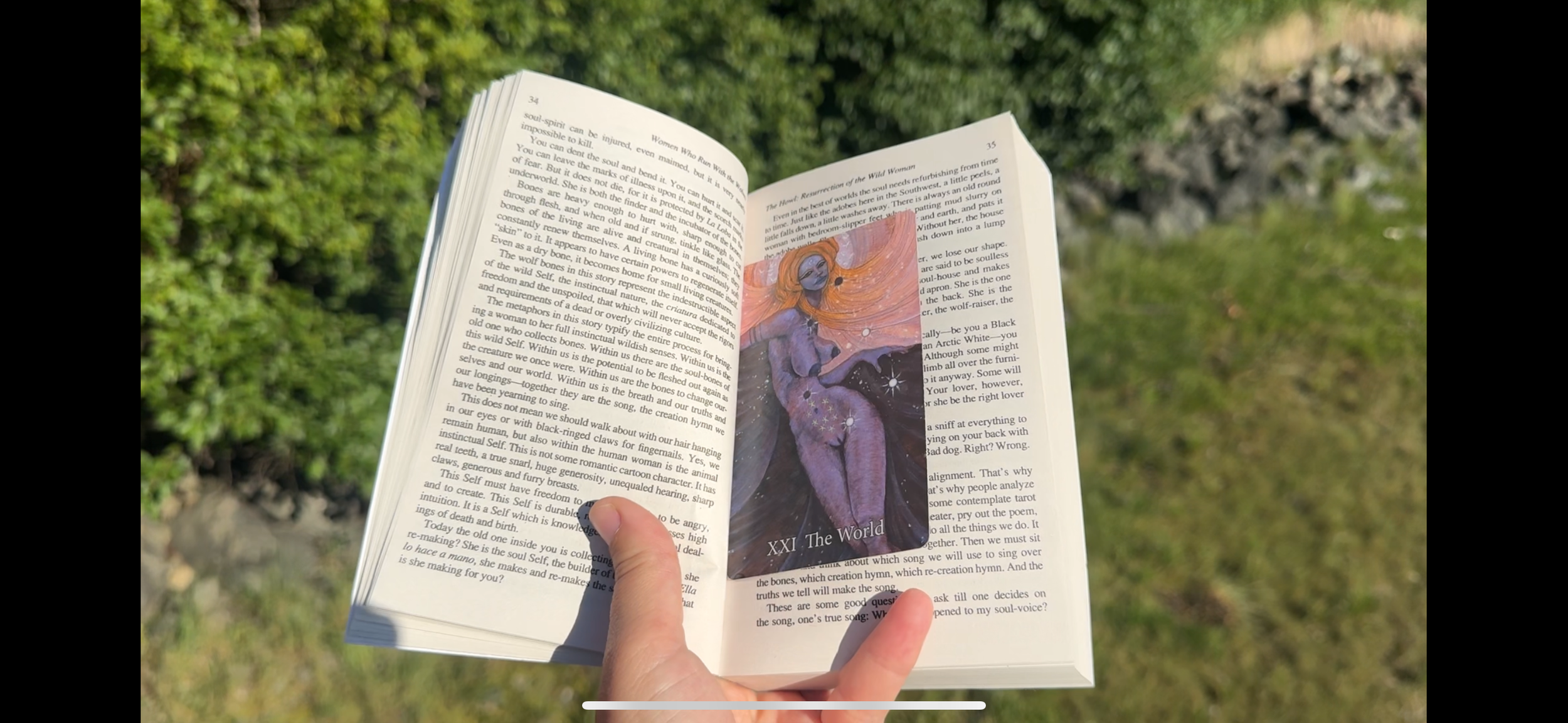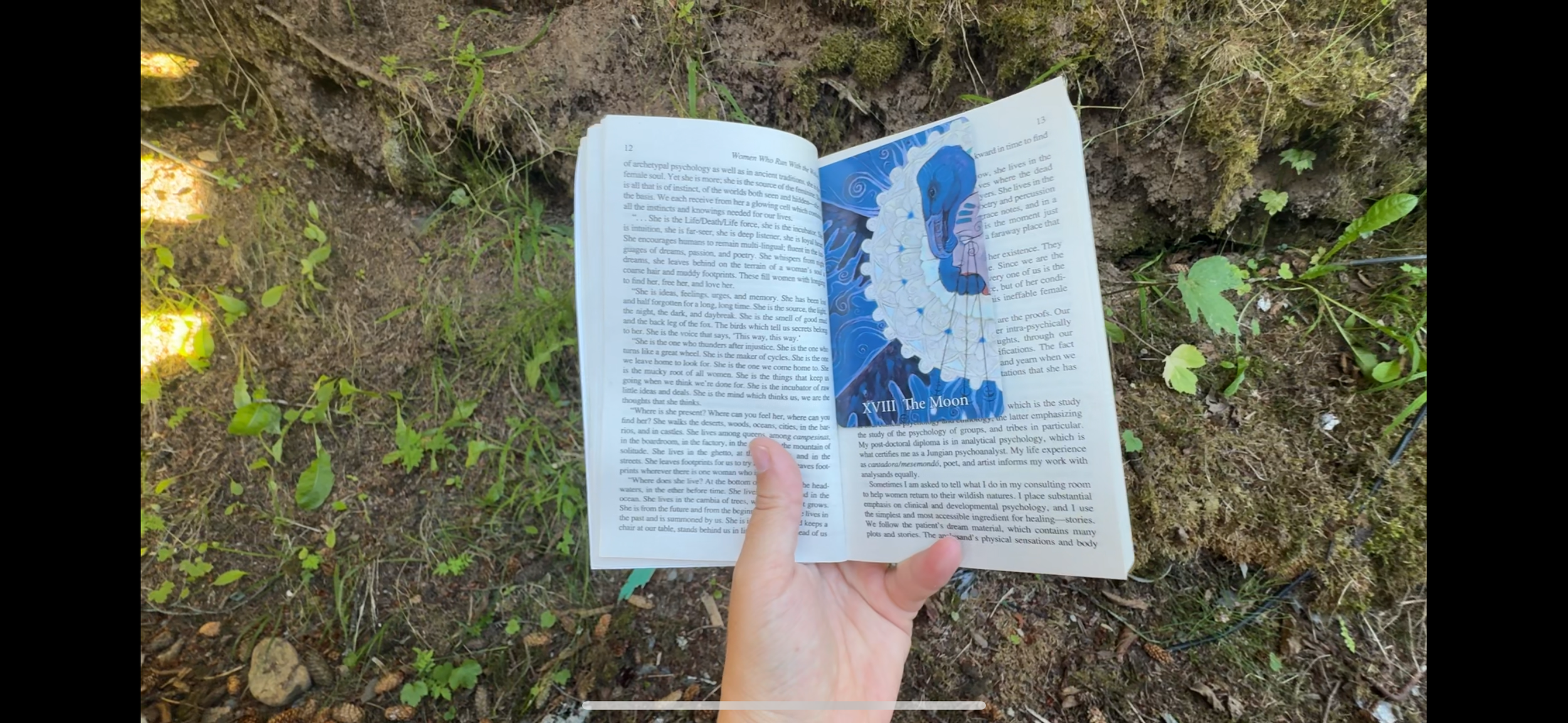Ch.1 Wild Woman
Resurrecting the Wild Woman: A Tarot Reflection on Chapter 1 of Women Who Run With the Wolves
In the opening chapter of Women Who Run With the Wolves, titled The Howl: Resurrection of the Wild Woman, Clarissa Pinkola Estés invites us to remember what we have forgotten. She calls us to listen for the soul’s howl, that ancient, emotional cry that rises from the deepest parts of us. This is not a gentle awakening. It is the kind of resurrection that requires us to crawl into the underworld, gather the bones of who we used to be, and sing ourselves back to life.
I pulled three cards from the Mary El Tarot. Their messages aligned perfectly with Estés’ (the author) mythic and emotional terrain.
The Moon was the first card, and it captured the entire essence of the chapter. In the Mary El, it depicts a blue vulture and a gaping-mouthed woman. It is raw, guttural, and wild. The Moon represents the mystery of the unconscious, the parts of ourselves that we hide, deny, or lose over time. Estés writes that every woman has a Wild Woman within her, but she has been exiled, buried beneath layers of social conditioning and silence. The Moon guides us into this buried terrain. It is not about light. It is about instinct. Grief. Emotion. And remembering. Like the vulture who feeds on what is dead to bring new life, the Moon signals that the path forward requires us to face what has been lost and forgotten.
Supporting this theme was The World. In the Mary El, this card asks us how our story ends. It speaks of afterlife, integration, and movement with the flow of the universe. La Loba, the mythic figure introduced in Chapter 1, does not simply collect bones for the sake of it. She gathers them to bring something whole and holy back to life. This is the message of The World. That the end of this journey is not chaos, but completion. If we can survive the descent, if we can howl through our pain, we return to ourselves in full. The World reminds us that healing is possible. Wholeness is real. It is not something we create. It is something we recover.
The final card was the Two of disks, a woman with two coins over her eyes. In Greek mythology, coins were placed on the eyes of the dead as payment for crossing the river into the underworld. This card carries that energy. It is the moment before the journey begins. A choice / A threshold /A price.
Transformation always asks something of us. The Two also symbolizes duality, the tension between the life we live and the life we long for. It speaks of the many roles women are forced to juggle, the perspectives we must hold, and the cost of not seeing ourselves clearly. To resurrect the Wild Woman, we must be willing to see with new eyes. We must be willing to pay the price of truth.
Together, these three cards tell the same story that the author does. First, we hear the howl and feel the stirrings of the forgotten self (The Moon). Then we remember that resurrection is possible if we commit to the journey (The World). Finally, we accept the cost of transformation and prepare to cross the threshold (Two of disks).
This chapter is not just a beginning. It is a summons. A reckoning. A return.
And if you listen closely, you might hear your own bones calling you back.

